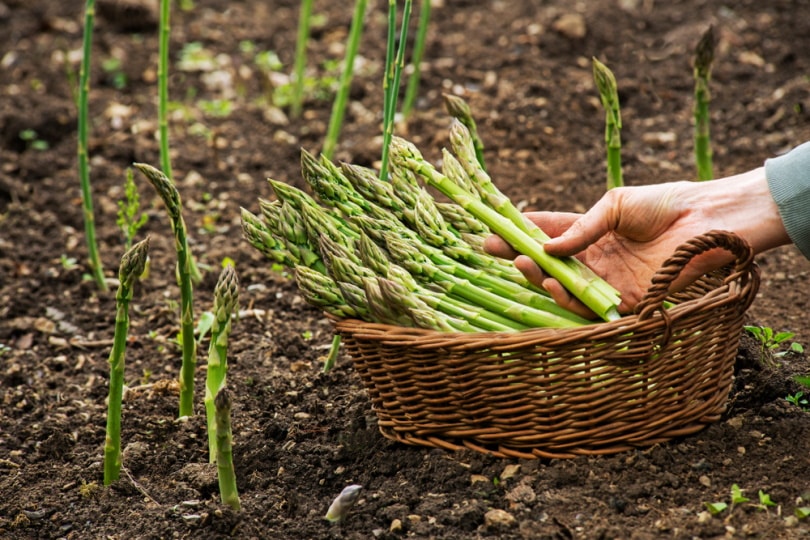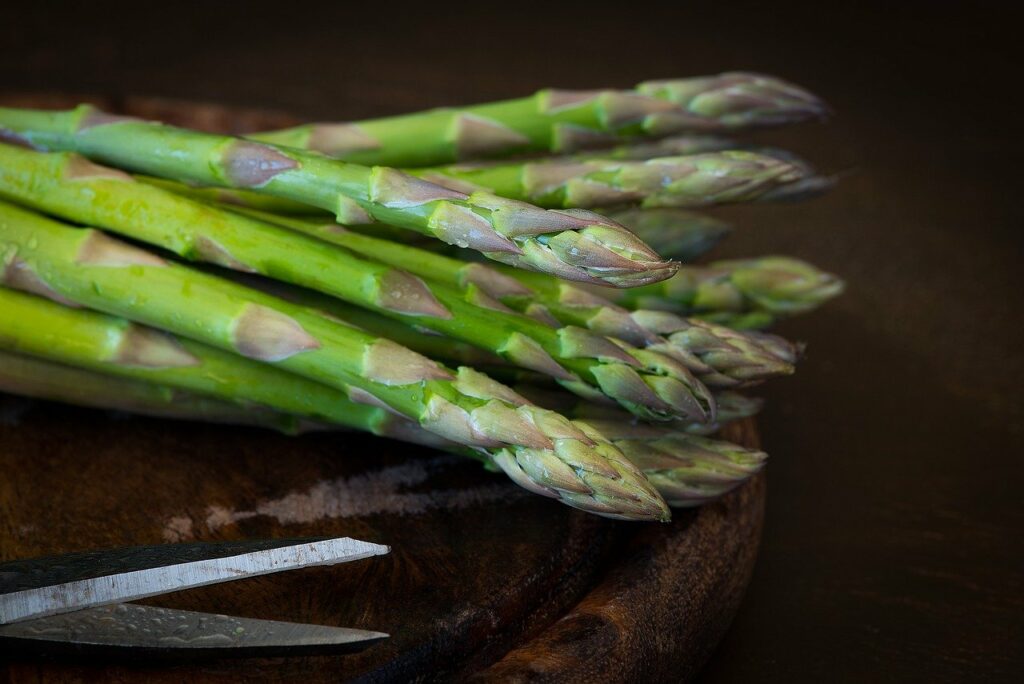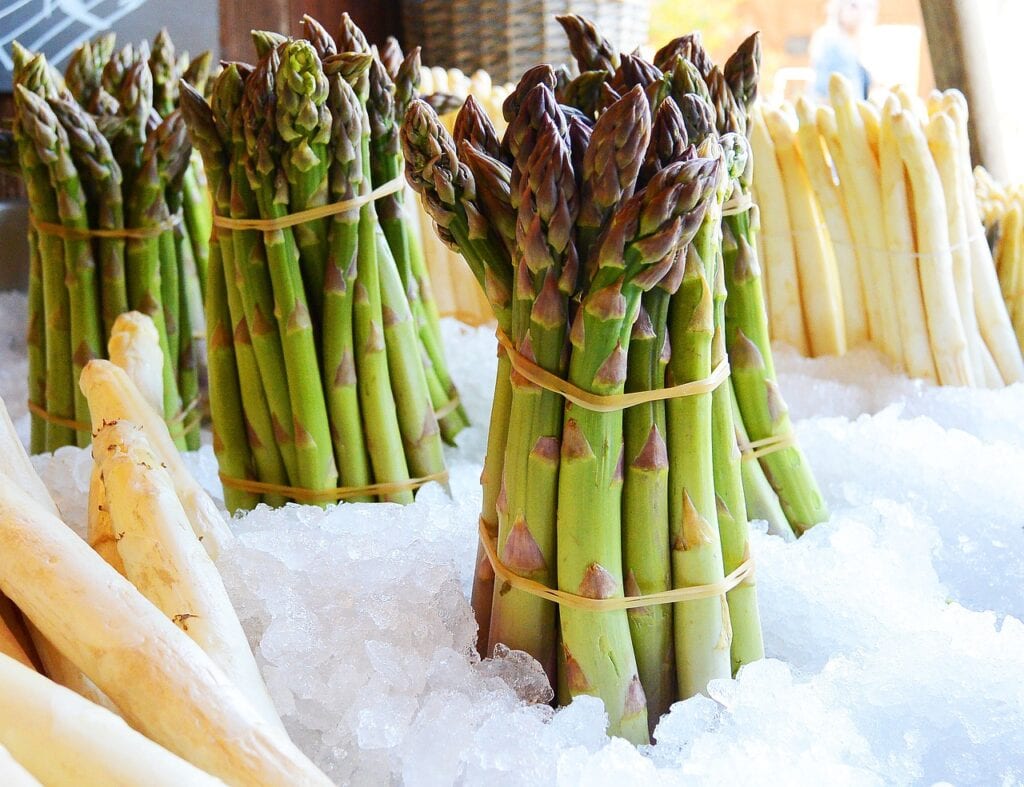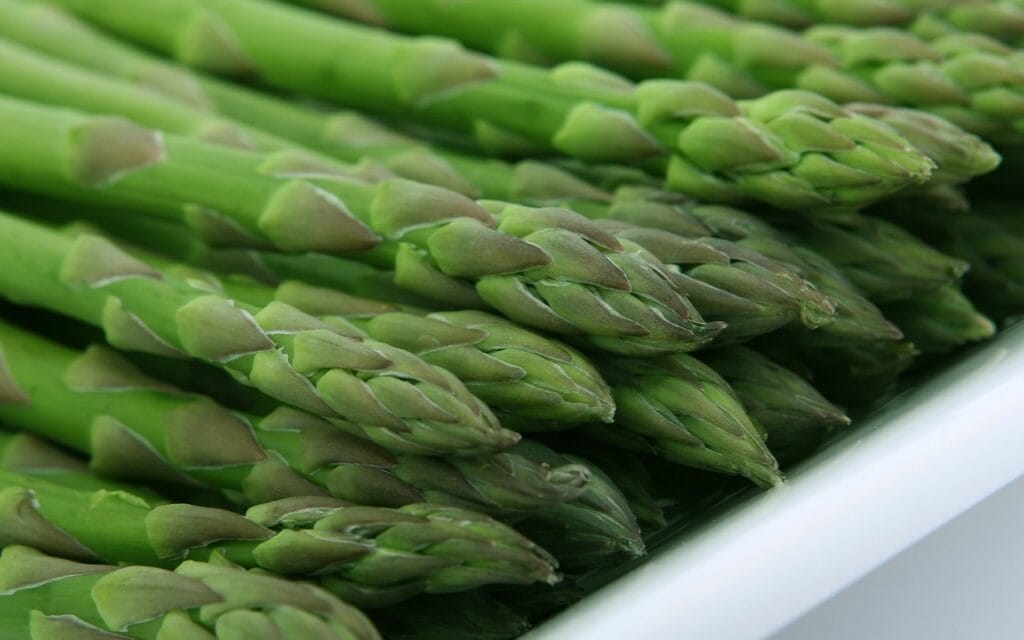9 Types of Asparagus to Grow at Home (with Pictures)
-
- Last updated:

Full of fiber, antioxidants, and flavor, asparagus is a perfect addition to a healthy dinner. For gardeners looking for the next crop for their garden, the broad assortment of these perennial plants provides plenty of fulfilling options.
There’s more to asparagus than the everyday green asparagus you find at the grocery store. Underground-grown white asparagus and vibrant purple asparagus provide unique tastes and aesthetics to open a world of possibilities.
Discover all that the delicious and nutritious veggies have to offer as we look at nine types of asparagus to grow at home.

The 9 Types of Asparagus to Grow at Home
1. Jersey Giant

| Plant Height: | 1–4 feet |
| USDA Zone: | 3-9 |
Plants mature in late spring, producing 2–4 times the number of spears of older green asparagus varieties. The vigorous grower resists many diseases, including rust, fusarium, and crown rot, and will thrive for many years if well-maintained.
2. Apollo

| Plant Height: | 1–4 feet |
| USDA Zone: | 4-9 |
Apollo asparagus matures early in the season and grows in abundance. It grows well in cool and warm conditions and holds up to many pests and diseases, including fusarium wilt, rust, and crown rot. The thick spears are great for storing in the freezer or serving fresh from the garden.
3. UC 157
| Plant Height: | 3–4 feet |
| USDA Zone: | 4-9 |
Though more suitable for warmer regions, UC 157 is adaptable across the United States and produces much earlier than other green varieties. The smooth, uniform spears are pale in color and plenty robust in flavor, presenting a tender, tasty, and non-stringy texture.
4. Viking KB3

| Plant Height: | 4–5 feet |
| USDA Zone: | 3-9 |
Viking KB3 stalks are skinny and long, often growing up to 10 inches. You can harvest the stalks earlier than many other types of asparagus, usually when they’re pencil-thin. The flavorful spears have a tender, meaty texture.
5. Atlas

| Plant Height: | 1–5 feet |
| USDA Zone: | 3-10 |
The smooth tapered spears are larger than earlier varieties, presenting a lush green color with purple hints at the head and butt. The succulent texture offers a fine, nutty flavor. Atlas is better suited for hard frost and hotter climates than most asparagus and is relatively drought-tolerant.
6. Millenium
| Plant Height: | 1–5 feet |
| USDA Zone: | 3-8 |
Plants are primarily male, allowing for heavy yields that beat many well-known high-producing asparagus types. Spears are high-quality and rich in tender flavor. They freeze well, making them perfect for year-round enjoyment.
7. Jersey Knight
| Plant Height: | 3–4 feet |
| USDA Zone: | 3-10 |
Plants are mostly male, offering excellent yields of large, uniform spears. Harvest is a little later than the early growers, typically starting in early April. The large spears supply a wonderful flavor and meaty texture.
8. Mary Washington
| Plant Height: | 3–4 feet |
| USDA Zone: | 3-8 |
Yields are generally abundant, with harvest occurring in April–May. The plant produces thick, juicy spears and demonstrates good resistance to disease, particularly rust and fusarium.
9. Precoce D’Argenteuil
| Plant Height: | 4–6 feet |
| USDA Zone: | 4-9 |
Since the 1800s, the Giant Dutch Purple-derived heirloom variety has been popular for blanching to create white asparagus. When left to grow in the sun, it takes on a vibrant purple and green color.
Literally meaning “early,” Precoce D’Argenteuil is early in seasonality and faster growing than most asparagus varieties. While asparagus typically takes three years to produce a viable harvest, it may only take two years for Precoce D’Argenteuil to be ready for the dinner table.

Asparagus Growing Requirements
Asparagus is a delightful plant for nearly any garden and is a rare perennial vegetable with a wide growing range from USDA zones 3 through 10. As the spears grow, they extend into 4-foot-tall ferns with feathery leaves, creating a unique aesthetic.
You can purchase asparagus as seeds or as year-old crowns. Asparagus grown from seed will take three years before it is ready for harvest, while crowns take two years to mature. Most plants will live for 15–20 years or even longer when well-maintained.
Asparagus isn’t fussy, and several varieties can tolerate drought, frost, and heat without issue. In general, asparagus requires the following growing conditions to thrive:
| Soil: | Well-drained, loamy; 6.0–7.0 pH |
| Sun: | Full (6–8 hours) |
| Water: | 1 inch per week |
| Planting: | Early spring |
| Spacing: | 12–18 inches |
Mix in a layer of compost or manure to prepare the soil for planting. You may need to do a soil test and amend it as needed with an appropriate organic fertilizer.
Asparagus beds should be free of weeds and well-watered during the first two years. Mulching with compost can help control unwanted growth, retain moisture, and feed the plants. When the third year rolls around, asparagus will become one of the first veggies you’ll enjoy from the garden.

Conclusion
It’s hard not to love asparagus. The perennial veggies are easy to grow, easier to store, and undeniably delicious. The fact that they’re full of vital vitamins and nutrients is just a bonus. With so many incredible varieties available, you won’t have to try too hard to find the perfect type of asparagus to suit your taste.
Featured Image Credit: DUSAN ZIDAR, Shutterstock
Contents

